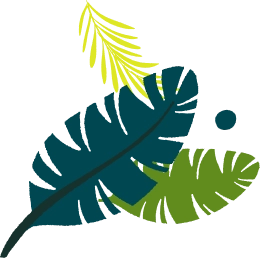


Vietnam’s rice terraces were always on my mini bucket list. The first time I saw a photo of Mu Cang Chai’s tiered fields on Instagram, I was hooked. The rolling green and gold layers cling to steep hillsides, flickering in sunlight.
In-person, the views are even more breathtaking with swirling mist and mountains as your backdrop.
Visiting Vietnam rice paddy fields is special not just for the scenery but for the culture as you get to see many ethnic minority farmers still planting and harvesting by hand.
Getting to the rice terraces depends on which region you choose. The two big names are Mu Cang Chai (in Yen Bai Province) and Sapa (Lao Cai Province) in northwestern Vietnam. Both start with reaching Hanoi, Vietnam’s capital.
Hanoi to Sapa (Lao Cai): Take an overnight train or sleeper bus from Hanoi. Tourist trains (SP1/SP3 sleepers) reach Lao Cai in ~8 hours, then a local bus or taxi (about 1 hour) goes up the mountain to Sapa town.
Alternatively, a comfortable sleeper bus departs Hanoi late evening and arrives in Sapa in ~5-6 hours. I recommend the bus if you want more time in Sapa in the morning (and I personally enjoyed the novelty of a sleeper cabin!).
Sapa Rice Terraces With Sunshine in a Small Water Pool
Hanoi to Mu Cang Chai: This is a longer trip where you can take an overnight bus from Hanoi (about 8-9 hours) or hire a private car. There is no direct train, so you must travel by road.
Many tour companies run special tours to Mu Cang Chai that include transportation. The roads wind through high passes, so motion sickness meds can be handy.
Mekong Delta Rice Fields: If you’re curious about southern rice paddies, flights from Hanoi or Ho Chi Minh City to Can Tho (or boat/tour via Cai Be) reach the Mekong Delta. However, the Mekong’s flat expanse is a different vibe (slow riverboats among palm-lined canals) versus the mountain terraces up north.
Whichever region you choose, plan extra travel time in case of winding mountain roads of Vietnam. The flip side is that the drive itself offers stunning views!
Must-See Spots:
Sapa Rice Terraces: The lush valleys around Sapa’s Cat Cat Village and the trek to Lao Chai and Ta Van villages are classic rice field walks. The iconic image is of fansipan looming while terraces glow in rainbow shades. Don’t miss the local markets in Sapa town for textile handicrafts from the Hmong and Dao communities.
Mu Cang Chai Terraces Are a Sight to Behold
Mu Cang Chai Terraces: Often called the best rice terraces in Vietnam, this area has sweeping curves of fields at La Pan Tan, Che Cu Nha and Ze Xu Phinh hamlets. The name Mu Cang Chai is almost synonymous with “Vietnam rice terrace tour” for good reason. Visiting in late September - October when the rice turns golden is legendary.
Hoang Su Phi Village Looks Ureal
Y Ty & Hoang Su Phi: If you want to avoid crowds, consider Y Ty (near Sa Pa) or Hoang Su Phi (Ha Giang Province). These lesser-known valleys have even more remote rice fields. They are very rustic - think bumpy jeep roads, homestays in tiny villages, and virtually no tourists aside from photographers. The reward is feeling like you’ve discovered a secret paradise.
Note: Honorable mention - Tam Coc landscape in Ninh binh for its beautiful rice paddies which are visible when you do the boat tour.
Insider Tips & Hidden Gems:
Hire Local Guides or Join Treks: Locals know secret viewpoints and trails (like sunrise spots overlooking emerald valleys). Many homestays in Mu Cang Chai offer guided treks up the terraces. There are some beautiful waterfalsl beyond the fields like the Silver waterfall in Sapa which is a perfect midday break from hiking.
Rice Paddy Homestays: Stay overnight in villages like La Pan Tan (Mu Cang Chai) or Ta Phin (Sapa region). Waking up to fog drifting through the paddies and the sound of roosters is unforgettable. You can even help farmers water the fields or harvest (depending on season) - a rare hands-on experience.
Local Snacks: Try “xoi nep” (sticky rice with beans or with grilled meat) or “com lam” (bamboo rice) sold by vendors in the fields. Nothing beats the energy boost of sticky rice and grilled pork after a morning of trekking.
the Rice Fields of Sapa Are Not as Steep as It Looks and They Are Quite Wide
Best Time to Visit: The famous golden season is late September to mid-October (harvest time) when terraces turn vivid gold. Early May (when fields are bright green, water-filled) and late June (fully green before ripening) are also beautiful.
Avoid the monsoon peaks (July/August heavy rain can muddy trails, though occasional sunny breaks do happen). Winter (Dec-Jan) is cold and foggy - the hillsides may be brown, but it’s interesting if you’re into ethnic culture fairs.
Opening Hours & Fees: The rice fields themselves are not “ticketed attractions” - they are farmland! However, some popular viewpoints or villages may charge a small entrance fee (often 10,000-20,000 VND). Most hikes start early in the morning to catch the best light and avoid afternoon heat or clouds.
Amenities: Don’t expect fancy facilities in remote valleys. In Sapa you’ll find guesthouses and restaurants; in Mu Cang Chai, amenities are basic. Carry cash (dong) as ATMs are scarce outside main towns.
Water and food availability: bring snacks and a reusable water bottle. Homestays usually provide simple Vietnamese meals (pho, rice, veggies, spring rolls).
Permits: No special permits needed for tourist areas. Just be respectful of farmers - stick to paths or designated viewing terraces unless you’re on an organized trek.
Weather Gear: Even in summer, mountain nights can be chilly. Bring layers, rain gear (sudden showers happen), sturdy walking shoes (or hire local boots). Sunscreen and a hat are key for day treks.
Cat Cat Village of Sapa, Vietnam
Option 1: Sapa + Surroundings (Full Day Trip)
Morning: Take a 6am sleeper bus or early train from Hanoi to Lao Cai, arrive at 2pm. Transfer to Sapa town.
Afternoon: Lunch in Sapa, then hire a guide or taxi to Cat Cat Village. Trek through terraced fields back to Sapa (3 to 4 hours). Enjoy the sunset light on the hills.
Evening: Dinner of hearty mountain broth (thang co or local stew) and stroll Sapa night market for textiles.
Option 2: Overnight Homestay in Mu Cang Chai
Day 1: Take an overnight bus from Hanoi. Early arrival in Mu Cang Chai valley by 8am. Check into a village homestay (e.g., in Che Cu Nha). Spend the day hiking between Muong Lo river fields and hillside terraces. Evening is free - share stories around dinner and try local rice wine.
Day 2: Wake before sunrise for terrace photography. Explore the famous La Pan Tan viewpoint. Midday, hike down through rice paddies to villages. Afternoon bus back to Hanoi or continue north to Ha Giang.
Option 3: Trekking & More (2-3 full days)
Combine both Sapa and Hoang Su Phi: Start in Sapa (2 days trekking Ta Van/Y Linh Ho), then bus to Hoang Su Phi (a 4-hr drive). Spend a day hiking the ancient terraced fields in Ma Li Pho. This off-the-beaten path route is a treat for adventure travelers.
Sapa Valley in the Winter Months
Q: When is the best time to see Vietnam’s rice terraces?
A: Late September and October (harvest season) show golden fields. Late spring (May-June) brings neon-green fields. Either season has its charm - gold for color, green for lush life.
Q: Do I need a tour or guide to visit the rice paddies?
A: Not strictly. You can hire local motorbike taxis or simply join a group trek for safety and insight. Tours often include homestays and guided hikes. A guide is highly recommended if going off the main paths (for navigation and cultural context).
Q: How do I get from Sapa to Mu Cang Chai?
A: There’s no direct public transport. The best way is to return to Hanoi (bus/train) and then head back north-west (the long way). Alternatively, private drivers can make the 300+km loop through mountain passes in ~7-8 hours. Many travelers treat them as separate trips.
Q: Can I visit rice fields anywhere else in Vietnam?
A: Yes! The Red River Delta near Hanoi (e.g., Yen Bai’s Dai Lanh) has paddies, and the Mekong Delta in the south (Vinh Long, Can Tho) has flat rice farms and floating markets. But the mountainous terraces in the north (Sapa/Ha Giang/Mu Cang Chai) are the ones most travelers rave about.
Q: Is it easy to hike the terraces on my own?
A: Trails around popular spots like Sapa’s Cat Cat and Ta Van villages are well-trodden and marked (local villagers walk them daily). More remote areas (Hoang Su Phi, Mu Cang Chai hamlets) may lack clear paths. If you’re not an experienced trekker, hire a guide or join a small group.
Get the latest information about our tours and special offers!